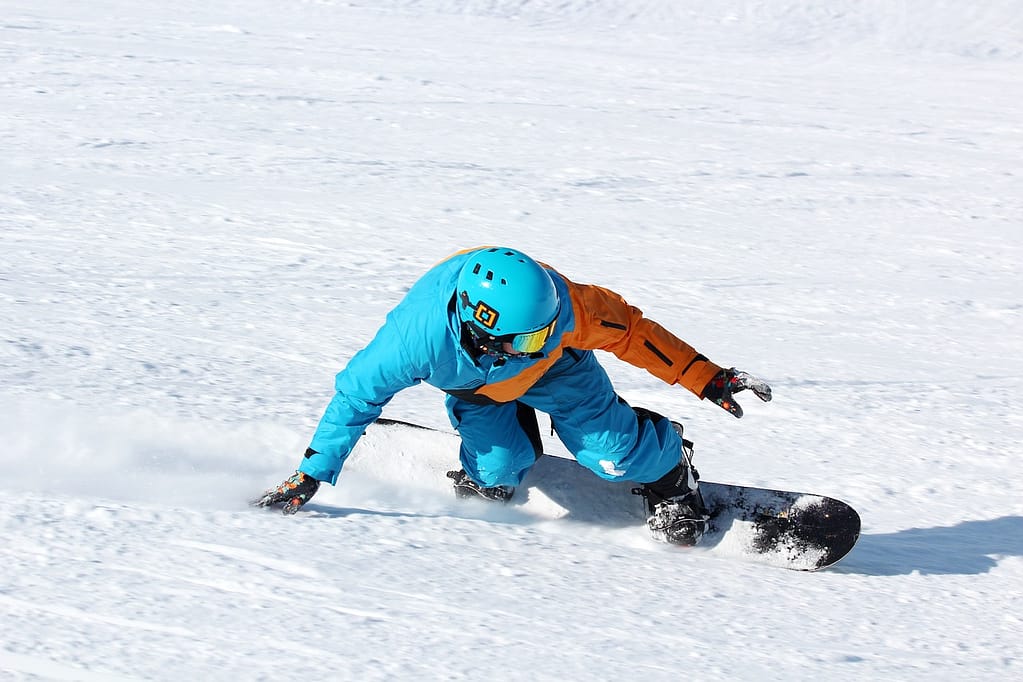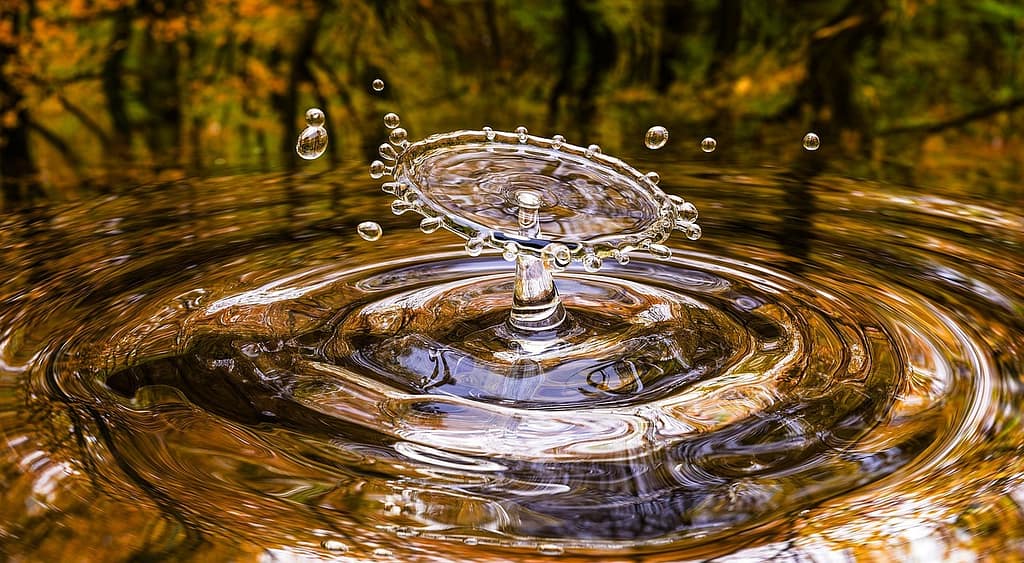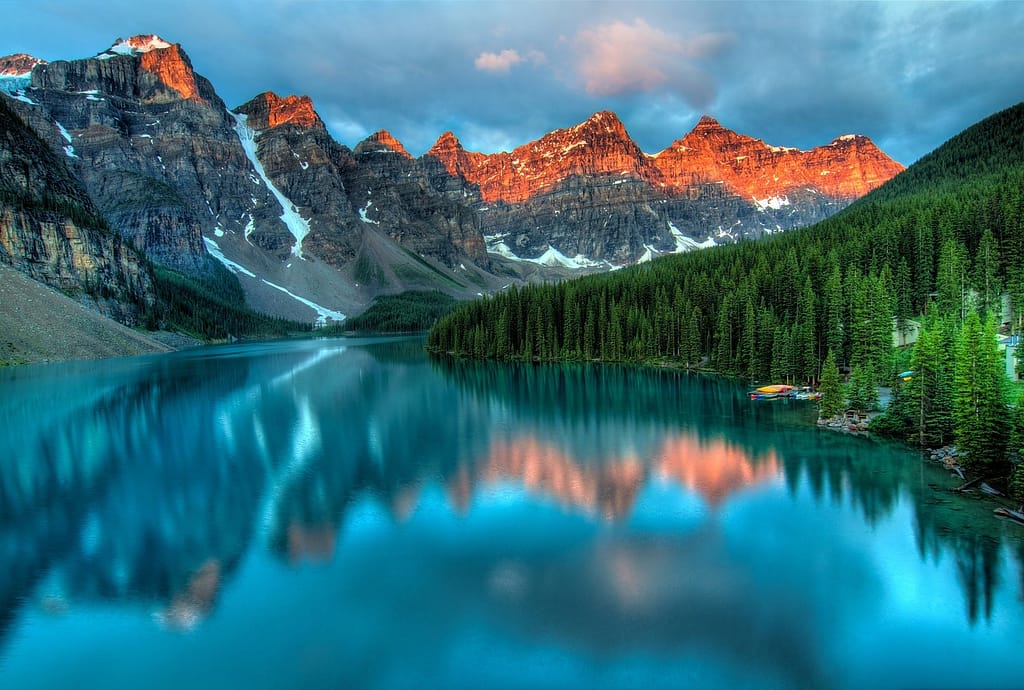Snowboarding is a thrilling winter sport that combines skill, balance, and a love for the great outdoors. Whether you’re just starting out or you’re a seasoned pro, having the right gear can make a world of difference in your performance and enjoyment on the slopes. This article will guide you through the must-have snowboarding gear for both beginners and pros, ensuring you’re well-equipped for your next adventure.
Snowboards
Types of Snowboards
Choosing the right snowboard is crucial for your riding style and ability level. Here are the main types of snowboards:
- Freestyle Snowboards: These boards are designed for tricks and jumps. They are shorter, lighter, and more flexible, making them perfect for terrain parks.
- All-Mountain Snowboards: Versatile and great for various conditions, these boards are suitable for riders who enjoy a mix of groomed runs, powder, and occasional park use.
- Freeride Snowboards: Built for off-piste and powder, these boards are stiffer and longer, providing stability and speed in deep snow.
- Powder Snowboards: Specifically designed for deep powder, these boards have a wider nose and a narrower tail, which helps them float on soft snow.
Choosing the Right Snowboard
When selecting a snowboard, consider the following factors:
- Size and Shape: The length and width of the snowboard should match your height, weight, and boot size. A longer board provides stability at high speeds, while a shorter board is easier to maneuver.
- Flex and Camber: The flex of the board affects its responsiveness. Softer boards are forgiving and easier to control, while stiffer boards are more stable at high speeds. The camber profile (the curve of the board) also influences performance; traditional camber offers precision and power, while rocker camber is more playful and forgiving.
- Brand Recommendations: Some reputable snowboard brands include Burton, Lib Tech, and Arbor. Each brand offers a variety of models catering to different riding styles and skill levels.
Care and Maintenance
Proper care and maintenance of your snowboard will prolong its life and ensure optimal performance.
- Cleaning and Storage: After each use, wipe down your board to remove dirt and moisture. Store it in a cool, dry place away from direct sunlight.
- Waxing and Tuning: Regular waxing keeps the base of your board slick and fast. Tuning the edges ensures they remain sharp for better control. You can either do this yourself with a tuning kit or take it to a professional.
Burton Mens’ Custom Flying V Snowboard
Since 1996, this icon has reigned supreme and constantly evolved with a proven formula that combines time-honored design with envelope-pushing ingredients to create a lightweight, poppy, and super-versatile board. The Custom Flying V combines camber’s power with the relaxed float of rocker for the best of both worlds.
Feel free to check out some of the recommended products on Amazon:
- Burton Custom Flying V Snowboard
- Union Force Snowboard Bindings
- Burton Moto BOA Snowboard Boots
- TACVASEN Men’s Winter Jacket
- Smith Optics I/O MAG Goggles
Bindings
Types of Bindings
Bindings connect your boots to your snowboard, playing a critical role in your control and comfort.
- Strap Bindings: The most common type, featuring adjustable straps to secure your boots.
- Step-On Bindings: Allow you to step into your bindings without the need for straps, offering convenience and speed.
- Rear-Entry Bindings: Feature a hinged highback that allows you to slide your foot in from the back, making entry and exit quick and easy.
Choosing the Right Bindings
Consider these factors when selecting bindings:
- Compatibility with Snowboard: Ensure your bindings are compatible with your snowboard’s mounting system (e.g., 4×4, Channel).
- Flex and Adjustability: The flex of the bindings should match your riding style. Softer bindings are more forgiving, while stiffer bindings offer more responsiveness.
- Brand Recommendations: Notable binding brands include Burton, Union, and Flow. Look for models that offer the right balance of comfort and performance.
Installation and Adjustment
Properly setting up your bindings is essential for a comfortable ride.
- Proper Setup Techniques: Position your bindings at the correct angles and stance width based on your riding preference. Many riders start with a 15-degree angle on the front foot and a 0 to -6-degree angle on the back foot.
- Tips for Ensuring Comfort and Performance: Make sure the straps are snug but not too tight, and that your boots fit securely in the bindings without excessive movement.
Boots
Types of Snowboarding Boots
The right pair of boots can make or break your snowboarding experience.
- Soft Boots: Ideal for freestyle and all-mountain riding, offering flexibility and comfort.
- Hard Boots: Used mainly for alpine snowboarding, providing maximum support and precision.
- Hybrid Boots: Combine elements of both soft and hard boots, offering a balance of flexibility and support.
Choosing the Right Boots
Consider these aspects when choosing snowboarding boots:
- Fit and Comfort: Boots should fit snugly without causing pressure points. Ensure there’s no heel lift, as it can affect control.
- Lacing Systems: There are traditional laces, quick-pull laces, and BOA systems. BOA systems use a dial for quick and precise adjustments.
- Brand Recommendations: Top boot brands include Burton, ThirtyTwo, and Salomon. These brands offer various models to cater to different foot shapes and riding styles.
Boot Care and Maintenance
Maintaining your boots will ensure they last longer and perform well.
- Drying and Cleaning: After each use, remove the liners and let them air dry. Wipe down the exterior to remove any dirt.
- Longevity Tips: Store boots in a cool, dry place and avoid leaving them in hot or damp environments.
Outerwear
Jackets and Pants
Choosing the right outerwear is crucial for staying warm and dry on the slopes.
- Waterproofing and Breathability: Look for jackets and pants with a high waterproof rating (10,000mm or higher) and good breathability to keep moisture out while allowing sweat to escape.
- Insulation Types: Options include down, synthetic, and shell. Down offers the most warmth, while synthetic is more versatile in wet conditions. Shell jackets and pants are lightweight and allow for layering.
- Fit and Style: Choose a fit that allows freedom of movement without being too baggy or restrictive. Styles range from slim to regular to relaxed fits.
Layering for Warmth
Layering is key to regulating your temperature while snowboarding.
- Base Layers: Worn next to the skin, base layers should be moisture-wicking and breathable. Merino wool and synthetic materials are popular choices.
- Mid Layers: Provide insulation. Options include fleece, down vests, and lightweight insulated jackets.
- Outer Layers: Protect against wind and moisture. These include waterproof jackets and pants.
Brand Recommendations
Some reputable outerwear brands include:
- Patagonia: Known for sustainable and high-quality gear.
- The North Face: Offers a wide range of outerwear with excellent performance and durability.
- Burton: Provides stylish and functional snowboarding-specific outerwear.
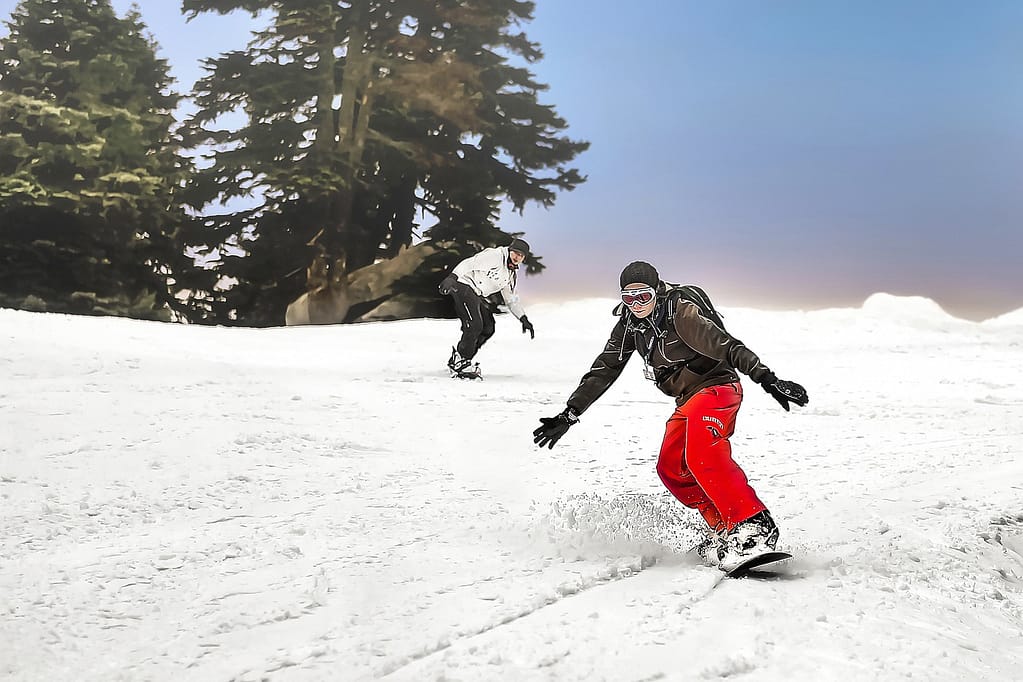
Helmets and Protective Gear
Importance of Safety Gear
Wearing safety gear is essential to prevent injuries and enhance your confidence on the slopes.
- Preventing Head Injuries: Helmets can significantly reduce the risk of head injuries in falls or collisions.
- Protecting Joints and Spine: Additional protective gear like wrist guards, knee pads, and spine protectors can prevent injuries during crashes or hard landings.
Choosing the Right Helmet
A well-fitting helmet is crucial for effective protection.
- Fit and Comfort: The helmet should fit snugly without being too tight. Look for adjustable fit systems and ample padding.
- Ventilation and Features: Good ventilation helps regulate temperature. Features like audio compatibility and goggle integration can enhance comfort and convenience.
Additional Protective Gear
Consider these additional protective items:
- Wrist Guards: Protect against wrist injuries, common in snowboarding falls.
- Knee and Elbow Pads: Provide cushioning during falls, especially useful for beginners and park riders.
- Impact Shorts: Offer extra padding for the hips and tailbone.
Gloves and Mittens
Types of Snowboarding Gloves
Keeping your hands warm and dry is crucial for comfort and control.
- Gloves vs. Mittens: Gloves offer better dexterity, while mittens provide more warmth by keeping fingers together.
- Heated Gloves: For those who suffer from cold hands, heated gloves can provide additional warmth.
- Waterproof and Insulated Options: Look for gloves with good waterproofing and insulation to keep hands warm and dry.
Choosing the Right Gloves
Consider these factors when selecting gloves or mittens:
- Fit and Dexterity: Ensure a snug fit without being too tight. Good dexterity allows for easy adjustments of gear.
- Brand Recommendations: Reputable brands include Burton, Dakine, and Hestra.
Care and Maintenance
Proper care will extend the life of your gloves.
- Drying and Storage Tips: After use, dry gloves thoroughly and store them in a cool, dry place.
Goggles
Importance of Eye Protection
Goggles are essential for protecting your eyes and improving visibility.
- UV Protection: Look for goggles that offer 100% UV protection to shield your eyes from harmful rays.
- Visibility in Different Conditions: Different lens tints and colors are suitable for various light conditions. For example, yellow or gold lenses are great for low light, while darker tints are better for bright conditions.
Choosing the Right Goggles
When selecting goggles, consider:
- Lens Types and Tints: Choose lenses that match the typical conditions you’ll be riding in. Interchangeable lenses offer versatility.
- Fit and Comfort: Ensure a snug fit with your helmet and a good seal around your face to prevent fogging.
- Brand Recommendations: Trusted brands include Oakley, Smith, and Anon.
Care and Maintenance
Proper care will keep your goggles clear and functional.
- Cleaning Lenses: Use a microfiber cloth to clean lenses and avoid scratching. Never wipe the inside of the lens when wet to prevent damage to the anti-fog coating.
- Storage Tips: Store goggles in a protective case to prevent scratches and damage.
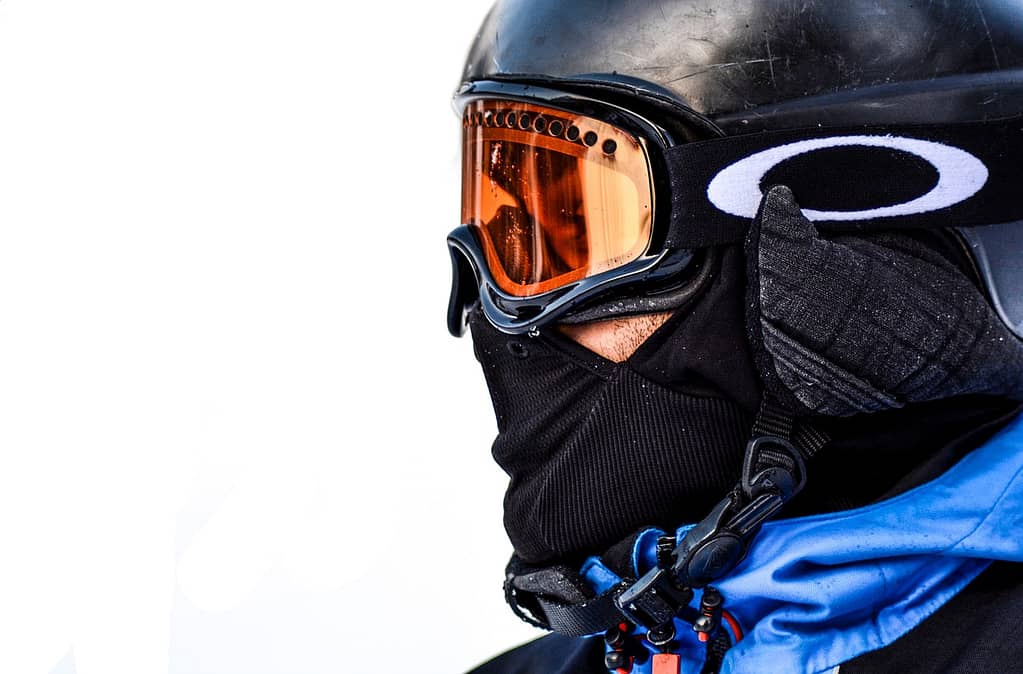
Accessories
Neck Gaiters and Balaclavas
Keeping your neck and face warm in harsh conditions is essential.
- Neck Gaiters: Versatile and can be worn in various ways to protect against the cold and wind.
- Balaclavas: Provide full coverage of the head, neck, and face, ideal for extremely cold conditions.
Backpacks
A good backpack can carry essentials like snacks, water, and extra layers.
- Features for Snowboarding: Look for backpacks with hydration systems, snowboard carry options, and avalanche safety gear compartments.
- Hydration Packs: Ensure you stay hydrated with built-in hydration systems.
Snowboard Locks and Security
Protect your investment by securing your snowboard when you’re not riding.
- Snowboard Locks: Compact and easy to use, these locks deter theft and provide peace of mind.
Tech Gadgets
Enhance your snowboarding experience with the latest tech.
- Action Cameras: Capture your runs with high-quality action cameras like GoPro.
- GPS and Tracking Devices: Track your location and performance on the slopes.
Budget Considerations
Investing in Quality Gear
Quality gear may come with a higher price tag, but it’s often worth the investment.
- Long-Term Savings: Durable gear lasts longer, saving you money in the long run.
- Performance and Safety Benefits: High-quality gear often performs better and provides enhanced safety features.
Budget-Friendly Options
There are ways to find great gear without breaking the bank.
- Best Value Brands: Look for brands that offer good quality at reasonable prices, such as Ride and K2.
- Tips for Finding Deals and Discounts: Shop during off-season sales, check online marketplaces, and consider outlet stores.
Used vs. New Gear
Buying used gear can be a cost-effective option, but there are pros and cons to consider.
- Pros and Cons: Used gear is cheaper, but it may have wear and tear. New gear comes with warranties and the latest technology.
- Where to Buy Used Gear: Look for reputable sources like local gear swaps, online marketplaces, and consignment shops.
Conclusion
Recap of Key Points
Having the right gear is essential for a safe and enjoyable snowboarding experience. From snowboards and boots to helmets and goggles, each piece plays a critical role in your performance and comfort on the slopes.
Final Thoughts
Investing in quality gear tailored to your needs, skill level, and riding style will enhance your snowboarding adventures. Whether you’re a beginner or a pro, the right equipment can make all the difference.
Call to Action
Take a moment to assess your current gear. Are there items that need upgrading or replacing? Use the insights from this guide to make informed decisions and gear up for your next snowboarding adventure.
References
- Burton Snowboards: burton.com
- REI Co-op: rei.com
- The North Face: thenorthface.com
- GoPro Cameras: gopro.com
With the right gear, you’ll be ready to hit the slopes with confidence and style. Happy snowboarding!

